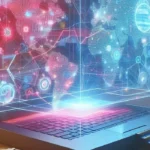As influencer marketing matures, brands are moving away from celebrity endorsements and mega-influencers, instead turning to micro-influencers who have proven to be highly effective at generating engagement and building trust with niche audiences. This shift marks the beginning of what many are calling “Influencer Marketing 2.0.” Micro-influencers, who generally have between 1,000 and 100,000 followers, offer a new approach that blends authentic connections with measurable impact, making them increasingly attractive to brands. Let’s dive into why this shift is occurring and how brands can harness the power of micro-influencers for successful marketing campaigns.
Why Micro-Influencers Matter
- Higher Engagement Rates
- Micro-influencers tend to have more engaged audiences compared to mega-influencers or celebrities. Research shows that as follower counts increase, engagement rates often decline, with micro-influencers often maintaining 3-5 times the engagement rate of larger influencers. Their followers are typically more invested in the influencer’s content and, in turn, more likely to trust their product recommendations.
- Enhanced Trust and Authenticity
- Unlike mega-influencers, micro-influencers often come across as more relatable, sharing interests and lifestyles similar to those of their followers. This authenticity makes their recommendations feel more genuine, as they are often perceived as everyday consumers rather than professional promoters. Followers trust them not only for their content but for their integrity, which adds significant value to the brands they endorse.
- Cost-Effectiveness
- Partnering with micro-influencers is often more budget-friendly than hiring top-tier influencers or celebrities. Brands can collaborate with multiple micro-influencers for the same cost as one high-profile influencer, which allows for a broader reach across various niche audiences. This affordability makes micro-influencers an attractive option for small to medium businesses and startups.
How to Find and Partner with Micro-Influencers
- Define Your Niche and Goals
- Identify the type of audience you want to reach and set clear campaign goals. Are you aiming to increase brand awareness, boost sales, or drive traffic? Micro-influencers tend to specialize in specific niches, so understanding your own brand’s unique value and audience preferences is essential.
- Use Influencer Marketing Platforms
- There are various platforms, such as AspireIQ, Upfluence, and Tribe, that help brands connect with micro-influencers. These platforms streamline the process by providing tools for influencer discovery, vetting, and collaboration management. Alternatively, brands can manually search for micro-influencers on social media platforms by exploring relevant hashtags and checking follower engagement.
- Vet the Influencers
- A critical step in the process is ensuring the micro-influencers align with your brand values. Beyond engagement metrics, assess the quality of their content, their style, and any past brand collaborations. Tools like HypeAuditor and SocialBlade can help verify audience authenticity and check for follower anomalies to ensure that the influencer’s engagement is legitimate.
- Build Authentic Relationships
- Micro-influencers are more selective with brand partnerships, often choosing collaborations that resonate with their audience. By fostering long-term relationships and maintaining open communication, brands can encourage micro-influencers to develop a natural affinity for their products, which can result in more genuine endorsements.
Crafting Effective Micro-Influencer Campaigns
- Leverage Storytelling Over Hard Selling
- Micro-influencers excel in storytelling. Their followers are less interested in ads and more engaged by personal stories and experiences with products. Brands should encourage influencers to share their personal journeys and organic interactions with the product, focusing on how it impacts their lifestyle.
- Encourage Creative Freedom
- Allowing influencers creative freedom can lead to better engagement and more authentic content. Rather than prescribing exact messaging, let influencers showcase your product in their own unique style, which will resonate more with their followers and feel less like a scripted advertisement.
- Use User-Generated Content (UGC)
- Micro-influencers are often prolific content creators, producing photos, videos, and reviews that can be repurposed across a brand’s own digital channels. UGC created by micro-influencers adds a layer of credibility and engagement when used on the brand’s website, social media, or even in paid ads. The authenticity of UGC can significantly impact prospective customers by showing real-world uses of the product.
Measuring Success with Micro-Influencers
- Track Engagement and Reach
- Engagement rates are crucial metrics when working with micro-influencers, as they indicate how well the content resonates with their audience. In addition to likes, comments, and shares, brands can monitor reach and impressions to gauge how widely the content is being viewed.
- Conversion and Sales Tracking
- To directly assess ROI, track conversions and sales resulting from the micro-influencer’s promotions. This can be done through unique discount codes, affiliate links, or landing pages. Brands can analyze which influencers drive the most traffic and conversions to refine their future influencer partnerships.
- Customer Feedback and Sentiment Analysis
- Sentiment analysis tools like Sprout Social and Brandwatch can help track how audiences are reacting to the influencer’s content and assess overall sentiment toward the campaign. Positive sentiment and constructive feedback can inform future collaborations and provide valuable insights into customer preferences.
Micro-Influencers in Different Industries
- Fashion and Beauty
- Micro-influencers play a significant role in fashion and beauty, where they often share style tips, tutorials, and product reviews. Followers are typically highly engaged and trust these influencers’ opinions on the latest trends and products, which drives purchase decisions in these categories.
- Health and Wellness
- For health, fitness, and wellness brands, micro-influencers can be powerful advocates. These influencers are often seen as credible sources in these fields and can demonstrate product usage in practical ways, such as workout routines, meal preps, and self-care regimens.
- Tech and Gadgets
- Tech micro-influencers, who frequently review new gadgets and software, help brands reach tech-savvy audiences. Their in-depth reviews and first-hand experiences with products are highly valued by followers making purchasing decisions in a crowded market.
Conclusion
Micro-influencers are reshaping the digital marketing landscape with their unique ability to authentically and affordably engage niche audiences. As influencer marketing matures, brands like Cafune Solutions are discovering that smaller follower counts can yield a high impact when an influencer’s audience is both engaged and aligned with brand values. By embracing the power of micro-influencers and focusing on relationship-building, storytelling, and measurable performance metrics, brands such as Cafune Solutions can successfully navigate Influencer Marketing 2.0, fostering deeper connections with their target audience and enhancing brand loyalty.







